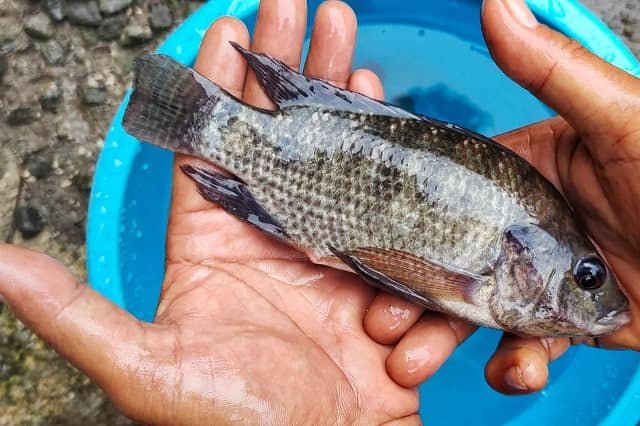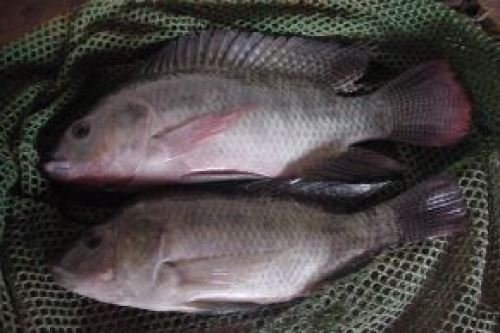
Tilapia aquaculture faces a range of challenges, one of which is the cost associated with feeding. In this regard, aquaculturists must explore feeding alternatives to address the high feeding expenses.
Scientific literature proposes two avenues to reduce feeding costs in aquaculture: developing low-cost diets or adopting different feeding strategies. Pulsed feeding is a brief disruption in the feeding strategy.
An experiment conducted by scientists from the ICAR-Central Institute of Fisheries Education and the ICAR-National Bureau of Fish Genetic Resources assessed the growth performance and immunophysiological responses in GIFT tilapia (Oreochromis niloticus). It has revealed promising insights into the use of pulsed feeding strategies within a biofloc culture system using 10 ppm salinity brackish water.
The Cost of Feeding in Tilapia Aquaculture
In aquaculture, feed constitutes a substantial proportion of total production costs, with estimates ranging from 60% to 80% of the expenses involved in tilapia farming. Efficient feeding strategies are crucial not only for cost reduction but also for optimizing fish growth and health.
Inadequate choices regarding feed quality and feeding patterns can lead to high food conversion ratios (FCR), making it essential to explore innovative approaches to address these challenges.
Pulsed Feeding in a Biofloc Culture System
The 60-day experiment focused on GIFT tilapia and was carried out in continental saline waters. The research aimed to evaluate the impact of different feeding patterns under a biofloc culture system. The following feeding strategies were compared:
- Biofloc in situ with daily feeding (T1)
- Biofloc in situ with alternate-day feeding (T2)
- Biofloc in situ with feeding every three days (T3)
- Biofloc in situ with no feeding (T4)
- Clear water control with daily feeding (C)
Each feeding strategy was conducted in triplicate to ensure the reliability of the results.
Promising Findings for Pulsed Feeding
Among the various feeding strategies, the results showcased the potential benefits of pulsed feeding within a biofloc system. Fish under the “biofloc in situ with daily feeding” condition (T1) exhibited significantly higher average body weight, weight gain, and specific growth rate (SGR) when compared to the control group (C). This finding suggests that daily feeding in a biofloc-based environment is particularly effective in promoting the growth of GIFT tilapia.
Stay Always Informed
Join our communities to instantly receive the most important news, reports, and analysis from the aquaculture industry.
Additionally, fish in the T1 group demonstrated a feed conversion ratio (FCR) and protein efficiency ratio (PER) similar to those in the control group (C), indicating that while pulsed feeding improved growth, it did not adversely affect feeding efficiency.
On the contrary, the T4 group, which received no feeding, exhibited the lowest growth rates and survival (85%). These results highlight the importance of providing a consistent food source for the health and development of tilapia.
Enhancement of Immunophysiological Responses
The experiment also delved into the immunophysiological responses of GIFT tilapia. It revealed notable differences in various immunological parameters, including nitroblue tetrazolium (NBT) and myeloperoxidase content.
Biofloc-based treatments showed higher NBT activity compared to the control group (C). Furthermore, antioxidant activities, such as superoxide dismutase (SOD), catalase (CAT), and glutathione peroxidase (GPx), were considerably higher in biofloc-based treatments compared to the control. This suggests that the biofloc system enhances fish immune responses and provides an antioxidant-rich environment.
Additionally, the study examined carbohydrate metabolism enzymes, including lactate dehydrogenase (LDH) and malate dehydrogenase (MDH). These enzymes were found to be lower in T1, T2, and T3 compared to the control and T4, indicating a potentially more balanced metabolic profile in fish under pulsed feeding conditions.
Conclusion
In conclusion, this experiment highlights the potential benefits of using biofloc in situ with pulsed feeding as an effective strategy to enhance the growth and immunophysiological responses of GIFT tilapia.
Pulsed feeding within a biofloc system provides a promising approach to optimize tilapia aquaculture, potentially reducing costs while improving the health and productivity of these valuable fish.
Contact
Sonia Solanki
Aquaculture Division
ICAR-Central Institute of Fisheries Education
Panch Marg, Off Yari Road, Versova Andheri (W)
Mumbai 400061, Maharashtra, India
Email: soniyasolanki22693@gmail.com
Reference (open access)
Solanki, S., Chadha, N. K., Sawant, P. B., Vungurala, H., & Sudhagar, A. (2023). Effect of Pulsed Feeding of GIFT Strain of Tilapia in Biofloc System Using Inland Saline Water. Aquaculture Research, 2023.
Editor at the digital magazine AquaHoy. He holds a degree in Aquaculture Biology from the National University of Santa (UNS) and a Master’s degree in Science and Innovation Management from the Polytechnic University of Valencia, with postgraduate diplomas in Business Innovation and Innovation Management. He possesses extensive experience in the aquaculture and fisheries sector, having led the Fisheries Innovation Unit of the National Program for Innovation in Fisheries and Aquaculture (PNIPA). He has served as a senior consultant in technology watch, an innovation project formulator and advisor, and a lecturer at UNS. He is a member of the Peruvian College of Biologists and was recognized by the World Aquaculture Society (WAS) in 2016 for his contribution to aquaculture.




